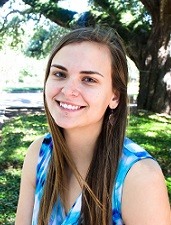Evaluation of Geometric Distortion in 7T MRI for Frameless Surgical Procedures
Presentations
MO-A-TRACK 6-7 (Monday, 7/26/2021) 10:30 AM - 11:30 AM [Eastern Time (GMT-4)]
Purpose: To investigate the feasibility of using 7T MRI for image guidance during neurosurgical procedures that utilize skin-adhesive fiducials. These techniques require high spatial accuracy, which in MRI is limited by distortions due to inhomogeneity of the static field, nonlinearity of the applied gradients, susceptibility of tissues, and chemical shift artifacts. These distortion artifacts can affect targeting accuracy and are more pronounced in 7T MRI than at lower field strengths.
Methods: A custom head-shaped phantom and 3 research subjects were imaged at 3T (Siemens Prisma) and 7T (Siemens Magnetom Terra). 10 skin-adhesive fiducials were placed on the phantom surface and on the exposed skin surface of the subjects, according to standard scanning procedures. Imaging sequences (MPRAGE, T2_SPACE, T2_SPACE_FLAIR) were optimized at 7T to reduce distortions, and all were corrected for gradient nonlinearity using the vendor distortion correction algorithm. The ground truth (GT) positions of the phantom fiducials were established via CT imaging (Siemens Somatom Force). Rigid registration of all image volumes was performed. Residual geometric distortions were quantified in phantoms via comparison with GT locations. Differences in fiducial positions in subjects between 3T and 7T were measured.
Results: The phantom skin fiducial location error was 1.9±0.6mm for 7T MPRAGE, 1.3±0.6mm for T2_SPACE, and 1.6 ±0.5mm for T2_SPACE_FLAIR. Average subject fiducial location differences (3T compared to 7T) were 1.9±0.1mm for MPRAGE, 2.1±0.1mm for T2_SPACE, and 2.9±0.5mm for T2_SPACE_FLAIR.
Conclusion: The data presented herein demonstrate that 7T-optimized imaging sequences can be used for neurosurgical planning applications where errors of up to 2mm are acceptable, using standard skin-fiducial positioning procedures.
Handouts
Keywords
Not Applicable / None Entered.
Taxonomy
Not Applicable / None Entered.
Contact Email



